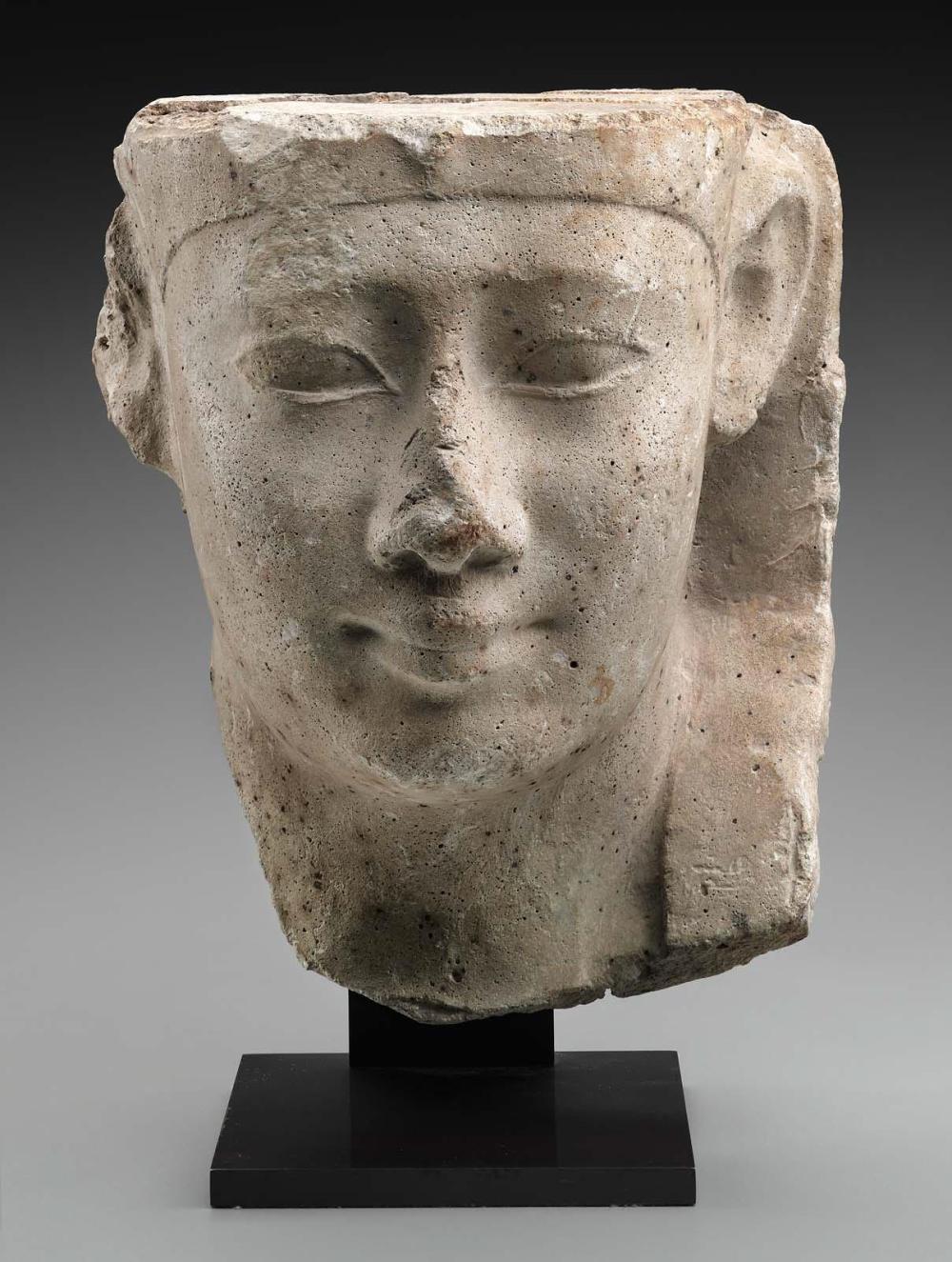Advanced Search 

Head of a pharaoh
Egyptian
Hellenistic Period (Ptolemaic Dynasty)
3rd–2nd century B.C.
Medium/Technique
Plaster
Dimensions
Height x width x depth: 24.1 x 19.1 x 21.6 cm (9 1/2 x 7 1/2 x 8 1/2 in.)
Mount: 22.9 x 12.7 x 12.7 cm (9 x 5 x 5 in.)
Mount: 22.9 x 12.7 x 12.7 cm (9 x 5 x 5 in.)
Credit Line
Museum purchase with funds from the Norma Jean and Stanford Calderwood Discretionary Fund, Norma Jean Calderwood Acquisition Fund, Egyptian Curator's Fund, Brian J. Brille Acquisition Fund for Ancient Egyptian Art, Miguel and Barbara de Bragança Fund, Mary E. Moore Gift, MFA Senior Associates and MFA Associates Fund for Egyptian Acquisitions, Barbara W. and Joanne A. Herman Fund for Egyptian Acquisitions, and the Ernest Kahn Fund
Accession Number2007.347
NOT ON VIEW
CollectionsAncient Egypt, Nubia and the Near East
ClassificationsSculpture
DescriptionLife-size sculptures that do not represent complete figures are exceedingly rare in Egyptian art, and the function of those that do exist is unknown. This head is one of that rare group and it probably represents King Ptolemy II, the first of the great Greek ruling generals of Egypt. Also rare is the fact that it is made of plaster.
The king wears a nemes headdress, the lappet of which is preserved only on the proper left side. The raised upper band of the nemes runs parallel to the forehead. In the center is a slight protrusion which marks the uraeus. The sculpture terminates in a flat surface above the band of the nemes, and that area is marked by deep parallel grooves into which might have slotted an additional headdress. The bottom of the sculpture takes the shape of a rough curve which encompasses the base of the neck and the edge of the lappet. The back is concave, and what look like finger marks run horizontally across the surface. The head was probably made in a clay mould, and the marks would have resulted from the pressing of the slightly hardened plaster into the mould.
The king wears a nemes headdress, the lappet of which is preserved only on the proper left side. The raised upper band of the nemes runs parallel to the forehead. In the center is a slight protrusion which marks the uraeus. The sculpture terminates in a flat surface above the band of the nemes, and that area is marked by deep parallel grooves into which might have slotted an additional headdress. The bottom of the sculpture takes the shape of a rough curve which encompasses the base of the neck and the edge of the lappet. The back is concave, and what look like finger marks run horizontally across the surface. The head was probably made in a clay mould, and the marks would have resulted from the pressing of the slightly hardened plaster into the mould.
ProvenanceMid-20th century (probably between about 1945 and 1960), acquired by Hans Hesslein (b. 1903 - d. 1979), Chappaqua, NY; probably by descent to his son, Thomas Hasslein (b. 1936 - d. 2006), Santa Fe; October 30, 2006, sale (consigned from the Hans Hesslein collection), Bonhams and Butterfields, San Francisco, lot 1479, to Rupert Wace Ancient Art Ltd., London; 2007, sold by Rupert Wace to the MFA. (Accession Date: June 27, 2007)
